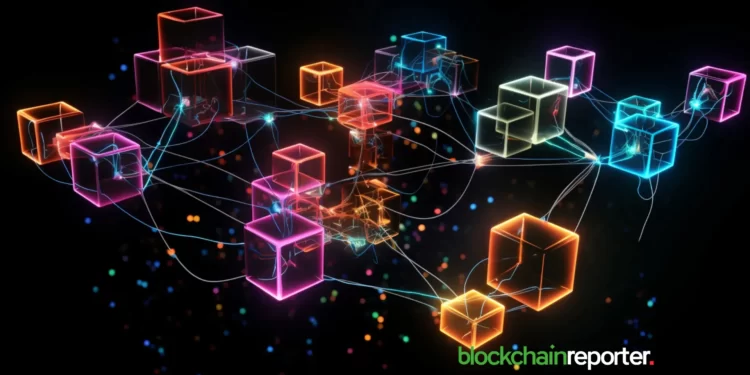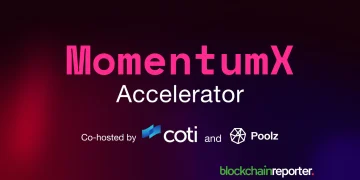The blockchain space is rapidly shifting, and new innovations to serve diverse needs in various applications are sprouting at an incredible rate. One of the most surging innovations in the blockchain space includes appchains, an abbreviation referring to application-specific blockchains. In this comprehensive guide, one is expected to gain knowledge of appchains, such as their definition, how they work, their benefits, how they compare with layer 1 chains, and different examples of appchains that make work easier and more efficient.
Defining Appchains
An appchain refers to a type of specialized blockchain network that is designed to assist or serve a specific business or application. In most cases, while public or general-purpose networks and platforms are designed for a broader scope of applications, appchains serve to narrow the scope to a particular application or a handful of them. Consequently, these specialized networks are able to process only certain types of transactions depending on the protocol used, create a unique fee structure, or based on other factors previously considered.
Operational Mechanism of Appchains
Basically, appchains operate under the same principles as the main concepts of almost all blockchain networks today. These application-centric networks are developed in such a design to allocate their resources to serve only one or few tasks as opposed to other general-need networks that part resources to multiple available tasks. This discusses the consensus mechanism of such specialized networks, supported by the decent mainnets that are also specialized.
Anatomy of Appchains: Layers Unveiled
As depicted above, the anatomy of appchains comprises five layers, each playing an essential role in ensuring the blockchain is functioning seamlessly. They include network layer, application layer, data layer, consensus layer, and smart contract layer.
Network Layer
This layer forms the basic foundation, and is responsible for managing the peer-to-peer network. It allows for communication, exchange of data, and validation of transactions between the network nodes while maintaining the blockchain network’s integrity and security.
Application Layer
The second layer sits on top of the network layer, this is where the specific applications are located. The developers build, deploy, monitor and control the decentralised applications on the blockchain using the user interfaces provided by this layer. This can integrate all the services and functionalities in a single environment.
Data Layer
As the name suggests, it is a layer with data infrastructure and the support structure of the blockchain. This layer has the responsibility of organizing and storing data on the blockchain. It takes responsibility for maintaining the blockchain state, recording all transactions, logging all smart contracts, and managing all data reported on the blockchain and then data that is readable on the blockchain.
Consensus Layer
This is a layer with a consensus mechanism of the appchain. It ensures the network agrees on most things by making sure everyone in the network thinks the same about a transaction, and this helps the decentralized network reach a consensus.
Smart Contract Layer
This platform has the smart contract engine of the application Conmmand-line interface, it ensures automated verification and triggering of the smart contracts. It makes sure predefined codes and rules are executed and automatically implemented on the blockchain virtually created in the blockchain protection.
Benefits of Appchains
The benefits of Appchains are extensive and differentiate them considerably from general-purpose blockchains:
Scalability
Whenever necessary, appchains may give extra cash to certain chores or functioning modules to maximize transaction throughput and minimize latency for well-liked apps. Scaling problems have been a major flaw on general-purpose blockchains, and appchains are adequately equipped to address this.
Modularity
Appchains are distinguished by a modular framework that allows limited-functionality systems to be readily tailored for takeaways. This is critical for assuring product-market suitability duration since developers and businesses must produce restricted functionality schemes and improvements to evaluate economic feasibility.
Interoperability
Designed to support interoperability, Appchains are built to enable disparate dApps to communicate with one another directly. This capability enables numerous dApps to interact more efficiently and creates a network effect by assisting consumers in adopting unique, useful apps later.
Appchains vs. Layer 1 Blockchains
These types of blockchains are essential components of the blockchain ecosystem but distinguishable based on their architecture, consensus mechanism, and scalability.
Architecture
Appchains have a flexible architecture, which can be used as the federation for any blockchain layers. Layer 1 blockchains have a rigid structure offering each layer defined rules, which do not fit the specific needs of individual DApps.
Consensus Mechanism
Appchains can apply a consensus mechanism that fits a particular application based on its unique workflow processes. Layer 1 blockchains have a mechanism that they were designed with it.
Appchains in Action: Showcasing Examples
The vivid examples demonstrate the varied use cases and capacities of appchains.
Polkadot Parachains
Every chain within the Polkadot network is its individual blockchain with certain processes or applicative intent. As they are connected to Polkadot’s Relay Chain for provisions for security and interoperability, they have an associated limit information passing to assure specialization and increase in performance.
Avalanche Subnets
Subnets refers to individual blockchains created in the Avalanche network to cater to certain needs of the applications. Subnets are tailored to tackle different use-cases and connected to the Avalanche consensus protocol to assure high throughput and proceed with low latency.
Cosmos Zones
Zones can be understood as independent blockchains stuck to the Cosmos Hub. Having appchains within the Cosmos ecosystem. They use the IBC protocol to let information flow seamlessly between blockchains and provide diverse dApps to effectively operate in the Cosmos network due to additional features.
Conclusion
To conclude, appchains are an innovative aspect in blockchain to offer specialized provisions to unique application intent. As they are provided with more scalability, modularity, and interoperability, the provision for developers to make their applications more efficient develops, and the concept of overloading general blockchain overall weakens. With the general blockchain market paradigm in continuous stages of change, appchains are now formed to undertake a certain central role in how progress gets triggered and associations formed between chains for varying applications and use-casts.























